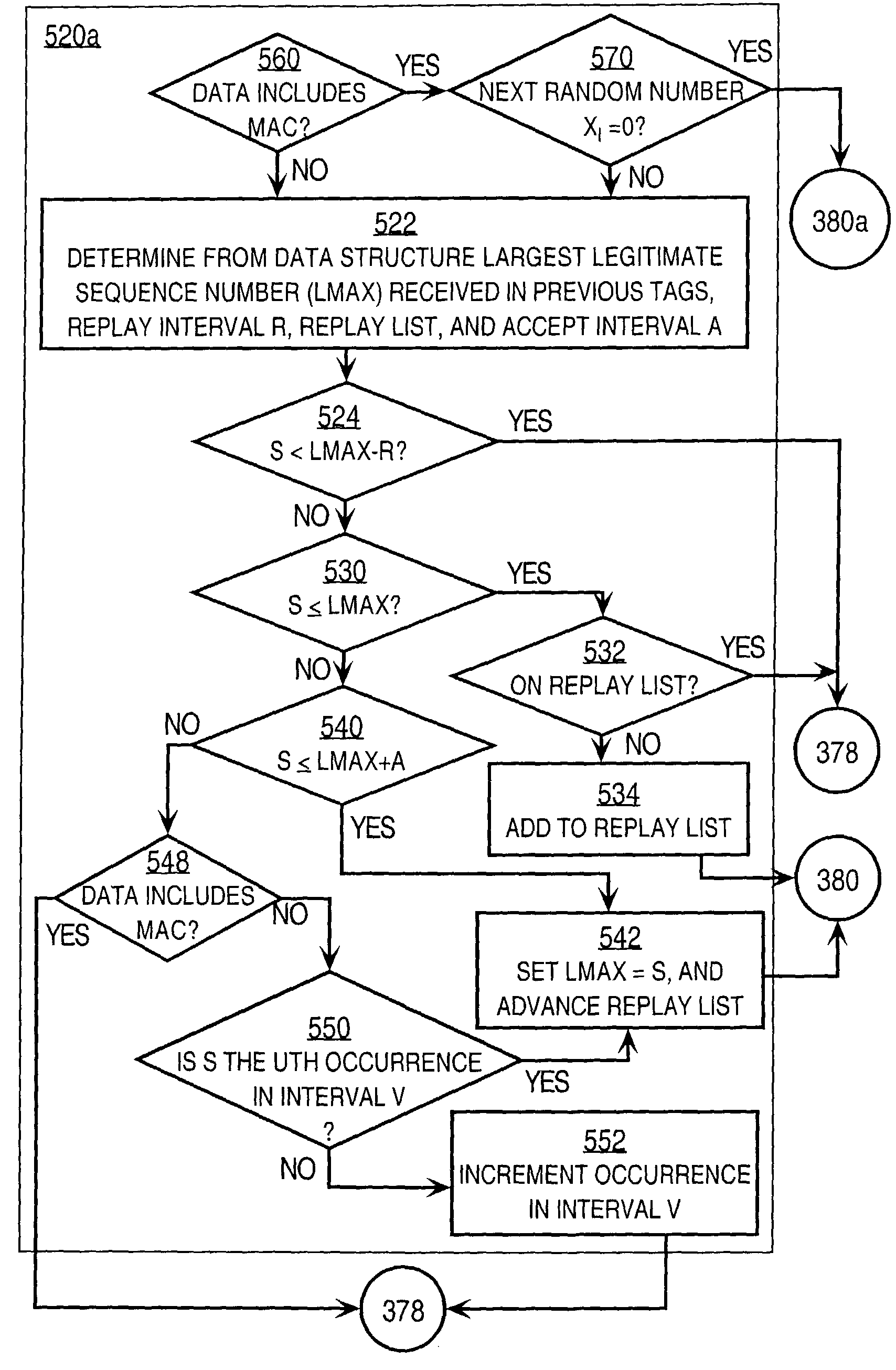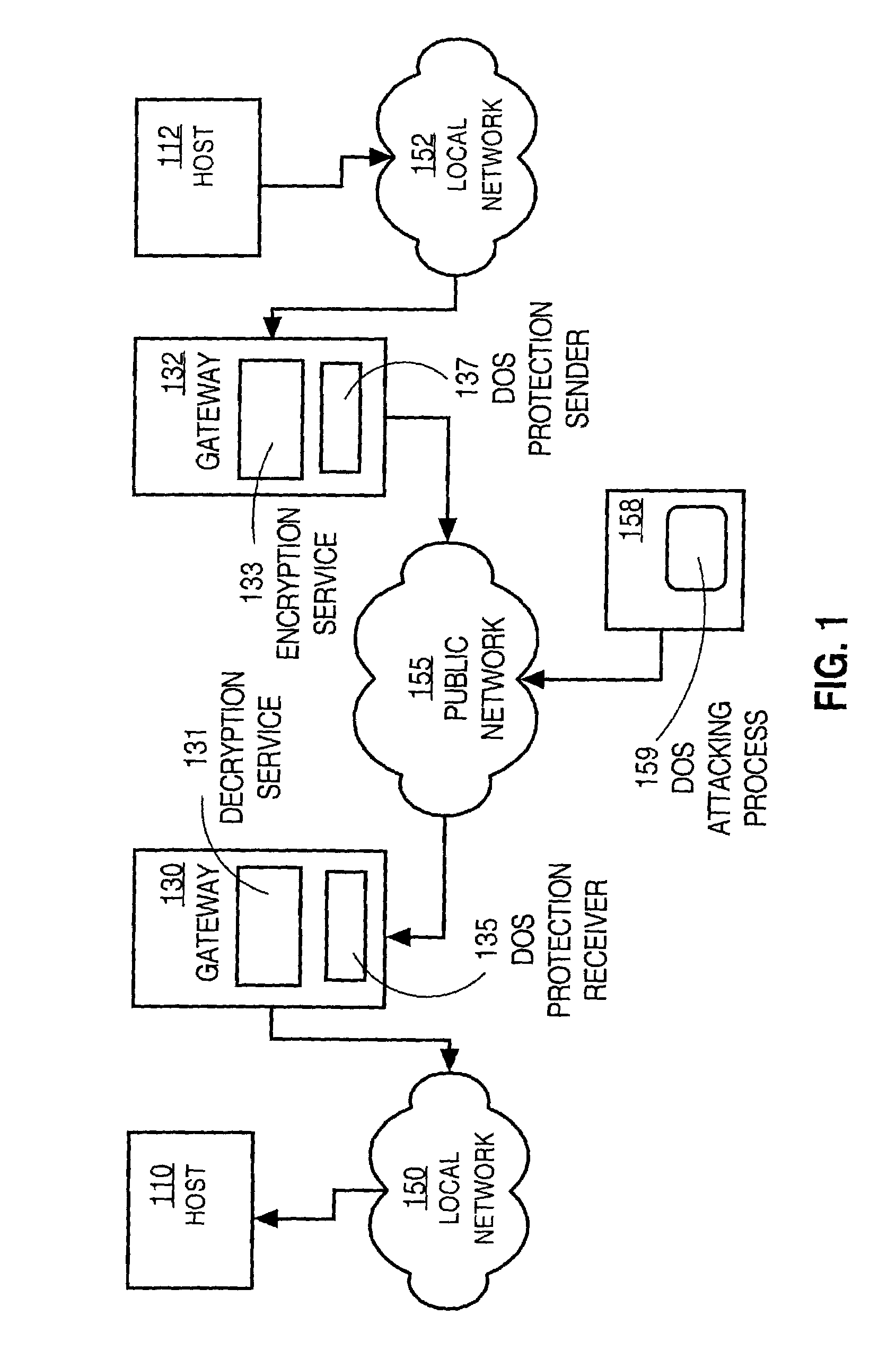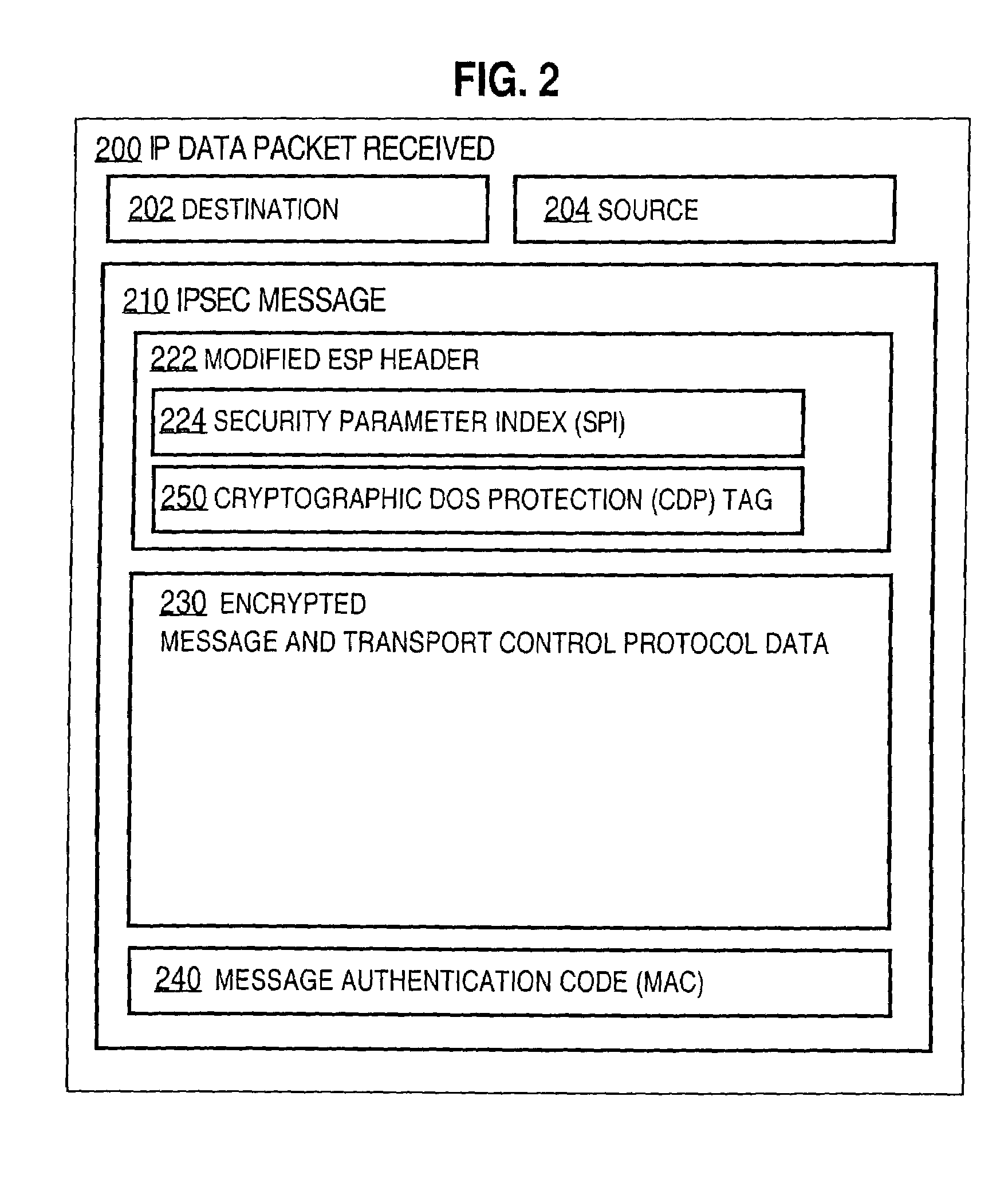Method and apparatus for cryptographically blocking network denial of service attacks based on payload size
a payload technology, applied in the field of cryptographic blocking network denial of service attacks based on payload size, can solve the problems of increasing the difficulty of providing network cryptographic services, consuming considerable computational resources, and no one but the intended recipient can determine the plaintext from the ciphertext in a practical period of time, so as to achieve the effect of avoiding the burden of computational costs
- Summary
- Abstract
- Description
- Claims
- Application Information
AI Technical Summary
Benefits of technology
Problems solved by technology
Method used
Image
Examples
embodiment 310
[0054]FIG. 3A is a flowchart that illustrates a high level overview of embodiment 310 of a method for generating data packets at a DoS protection sender, which method provides protection against denial of service attacks, according to an embodiment. Though steps are depicted in a particular order in FIG. 3A and subsequent flowcharts, the steps can be performed in a different order or overlapping in time in other embodiments.
[0055]In step 302, data is generated for a particular service that consumes considerable computational resources. For example, TCP data and plaintext to be sent to host 110 are encrypted to generate ciphertext. Any method to generate ciphertext that can be decrypted only by a trusted host may be used. In the VPN context, the TCP data and plaintext for host 110 are encrypted using a first secret key shared between gateways 130, 132, and an appropriate encryption mechanism such as DES or Triple DES. In addition, the ciphertext and a second secret key shared between...
embodiment 320
[0068]FIG. 3B is a flowchart that illustrates a high level overview of embodiment 320 of a method for processing received data packets to protect against denial of service attacks.
[0069]In step 322, the data packet with the CDP tag and the data for the particular services is received. For example, the received packet includes the ciphertext in portion 230, the MAC in portion 240, and the CDP tag field 250 of the modified ESP header 222. In an illustrated embodiment, the CDP tag holds an ESN from Table 2. In other embodiments, the CDP tag includes an encrypted length of the data for the particular, computational resource-intensive services, such as the ciphertext and MAC in portions 230 and 240. In still other embodiments the CDP tag includes a random number from a secret sequence shared by the gateways 130, 132 or from the one-way function.
[0070]In step 330, it is determined whether the data packet is legitimate, based at least in part on the value in the CDP tag. Several embodiment...
PUM
 Login to View More
Login to View More Abstract
Description
Claims
Application Information
 Login to View More
Login to View More - R&D
- Intellectual Property
- Life Sciences
- Materials
- Tech Scout
- Unparalleled Data Quality
- Higher Quality Content
- 60% Fewer Hallucinations
Browse by: Latest US Patents, China's latest patents, Technical Efficacy Thesaurus, Application Domain, Technology Topic, Popular Technical Reports.
© 2025 PatSnap. All rights reserved.Legal|Privacy policy|Modern Slavery Act Transparency Statement|Sitemap|About US| Contact US: help@patsnap.com



